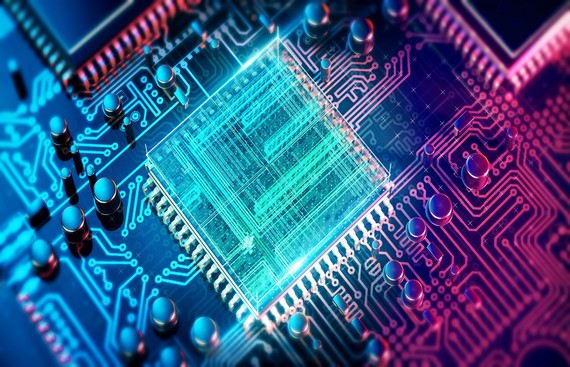Nanotechnology: A Quantum Leap into the Future
By Rajan Sarma, Online Content Writer, SiliconIndia | Tuesday, 25 August 2020, 05:07:48 PM IST

The idea of Nanotechnology has been around for almost four decades now. It was in the year 1989 when IBM researchers demonstrated a scientific breakthrough by constructing a 35-atom depiction of the company’s logo. The term nanomaterial is used for particles that have at least one dimension of 100 nanometers or less. At such minuscule scale, particles behave neither like solid, liquid or gas, instead, particles at the nanoscale are governed by a different set of physics known as Quantum mechanics.
Nanotechnology is the field of science that deals with the manipulation, engineering, control, exploitation of materials at the nanoscale for our benefits. Up until the last decade, the application of nanotechnology was limited to sunscreen lotions or car bumpers. With the onset of 2020, researchers have realized the revolutionary utility the field of nanotechnology has in store for us, and are beginning to realize its true potential. In the upcoming decade of 2020s, nanotech will move from labs into our bodies, home appliances, cars, solar panels, smart cities, healthcare systems and in every conceivable aspect.
Nanomedicine: tiny doses of good health
One of the most promising applications of nanotechnology is the use of nanomedicines. Nanomedicine involves the use of nanoscale tools and machines for a variety of purposes from curing disease, monitoring health to delivering drugs and repairing damaged tissues.
There are machines now called Nano Particles that are being built at such invisible scales that it can even flow in our blood and perform specific tasks— like removing arterial plaque, dissolving clots, monitoring the condition of heart, liver, kidneys, detecting and eradicating cancer. The greatest advantage of nanobots is that it can be built with biodegradable materials which will eventually dissolve after the task is completed.
One application of nanotechnology that is currently being developed is employing nanoparticles to deliver light or heat in specific cells – cancer cells, for instance. Particles are engineered such that they are attached to the damaged cells, which allows for direct treatment of the cells. For instance, researchers at Worcester Polytechnic Institute n England are using antibodies attached to carbon nanotubes in chips to detect cancer cells in the bloodstream.
Similarly, Researchers at the University of Houston are developing a technique to kill bacteria using gold nanoparticles and infrared light.
COVID-19: could Nanotech make the difference?
One of the biggest challenges the world faces today is the global pandemic COVID-19. Fortunately, Nanotechnology is being rigorously utilized to create Coronavirus vaccines and other diagnostic methods.
Researchers at the Queensland University of Technology, for instance, have shown that a filter made with cellulose nanofibers can block virus size particles. They believe the filters can be made inexpensively and could make a big difference in this fight against the pandemic.
Also, Researchers at the Catalan Institute of Nanoscience and Nanotechnology are using a nano-interferometric biosensor to develop a testing device for Covid-19. Pharmaceutical Novavax has already developed a Coronavirus vaccine candidate using protein nanoparticles and are set to run clinical trials anytime soon.
The age of Quantum Computer is here….
On April 2019, a group of researchers from the University of Copenhagen developed a nano component that emits light particles carrying quantum information. The minuscule components, less than one-tenth width of the human hair, makes it possible to scale up and could ultimately reach the capabilities required for a quantum computer or quantum internet.
Much of the deployment and benefits of nanotechnology can be witnessed by the tail-end of the 2020s decades – this is particularly true in the fields of Biotechnology, Medicine and Quantum Computing, to name a few.
Read More News :
Warehouses and Post-COVID Investment Opportunities for Minority Investors like Amit Raizada
Flipkart pledges 100% transition to electric vehicles by 2030


.jpg)
